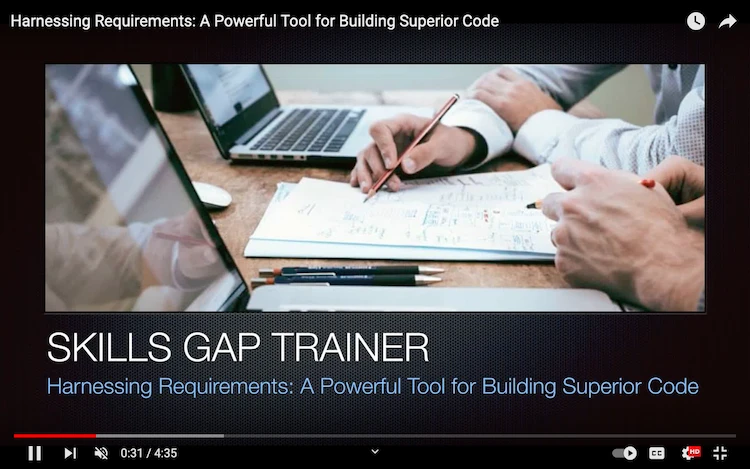The importance of using a well-defined requirements process in software development is crucial. Requirements refer to the explicit necessities or goals for what the final software product should be able to do and how it should perform. However, not all organizations strictly follow a requirements process, often due to resistance from programmers or designers who feel that it might stifle their creativity. However, well-defined requirements are critical for efficient software development and have far-reaching impacts on the final product’s quality, adaptability, and even the organization’s bottom line.
The Resistance to Requirements Process
The resistance to using a requirements process is often due to a lack of understanding or fear of constriction. Some developers, particularly those unaccustomed to working within a defined requirements framework, may feel that it limits their creative scope. Senior executives, often unfamiliar with the intricacies of software development, can be swayed by these complaints, leading to the derailment of a requirements process. It’s crucial to navigate these organizational challenges by addressing concerns and highlighting the benefits of a well-defined requirements process.
Management Psychology and Motivation Theories
One way to tackle the resistance to a requirements process involves applying principles from management psychology and motivation theories. For example, Maslow’s Hierarchy of Needs and Herzberg’s Two-Factor theory can provide valuable insights into understanding employee resistance. At the core of these theories is the idea that employees seek job satisfaction, autonomy, and the opportunity to grow and innovate. Requirements, contrary to the common perception, can serve as a platform for these aspects rather than a barrier.
The Autonomy-Mastery-Purpose model of motivation, popularized by Daniel Pink, can also be useful. This model suggests that people are motivated when they have autonomy (control over their work), mastery (the ability to improve), and purpose (a reason for the work to be meaningful). A well-defined requirements process can provide these three elements, offering programmers a clear understanding of what they are supposed to achieve (purpose), guidelines for achieving it (mastery), and the freedom to approach the problem creatively within the given parameters (autonomy).
The Benefits of a Requirements Process
A well-structured requirements process has tangible benefits. For one, it can reduce the likelihood of miscommunication and misunderstanding between the software development team and stakeholders. This reduction in ambiguity can decrease the number of revisions and reworks in the code, increasing efficiency and decreasing development time.
Requirements also help manage changes more effectively. By having a clear set of expectations, programmers and designers can better anticipate and address potential changes. This foresight can reduce the chaos and stress often associated with last-minute changes.
The requirements process can also help software designers retain their creative freedom. While requirements typically define software behaviour, they do not dictate the design, allowing designers ample scope for creativity.
Effective Management and Communication
Effective management and communication are key to overcoming resistance to the requirements process. Managers should convey the value of the requirements process, addressing the concerns and fears of their team members. Demonstrating how requirements can help manage change, increase efficiency, and still allow creative freedom can be persuasive arguments.
In parallel, providing professional development and training programs that emphasize the importance and best practices of a requirements process can ensure that all team members understand its value. Addressing gaps in technical skills and raising the aptitude level of the workforce are crucial to successfully implementing and adhering to a requirements process.
Related books and resources:
“Software Requirements” by Karl Wiegers and Joy Beatty – This book provides comprehensive insights into the requirements gathering process, emphasizing practical techniques and best practices in software development.
“Drive: The Surprising Truth About What Motivates Us” by Daniel H. Pink – Pink’s exploration of motivation, including the Autonomy-Mastery-Purpose model, offers valuable insights into overcoming resistance to structured processes like requirements gathering.
“Mastering the Requirements Process: Getting Requirements Right” by Suzanne Robertson and James Robertson – A detailed guide on the requirements process that helps ensure the right product is built by correctly defining what that product should be.
“Motivation and Personality” by Abraham H. Maslow – Though not directly related to software development, Maslow’s work on the hierarchy of needs provides foundational knowledge for understanding team member motivations and behaviour.
“The Lean Startup: How Today’s Entrepreneurs Use Continuous Innovation to Create Radically Successful Businesses” by Eric Ries – While focused on startups, this book offers valuable insights into how requirements and rapid iterations can drive innovation and efficiency.
“User Stories Applied: For Agile Software Development” by Mike Cohn – This book dives into the creation of user stories as a form of requirements gathering, emphasizing clear communication between stakeholders and developers.
“Agile Estimating and Planning” by Mike Cohn – Offers insights into planning and estimating in Agile projects, which can complement a solid requirements process by ensuring that expectations are aligned and manageable.
“Influence: The Psychology of Persuasion” by Robert B. Cialdini – Understanding persuasion can help project managers and team leaders overcome resistance to requirements processes and motivate their teams more effectively.
“Crucial Conversations: Tools for Talking When Stakes Are High” by Kerry Patterson, Joseph Grenny, Ron McMillan, and Al Switzler – This book provides strategies for effective communication, which is essential for successful requirements gathering and team collaboration.
“The Art of Doing Science and Engineering: Learning to Learn” by Richard W. Hamming – Though not directly about requirements or project management, this book encourages a mindset of continuous learning and improvement, applicable to mastering the requirements process and overcoming resistance in software development teams.
To see our Donate Page, click https://skillsgaptrainer.com/donate
To see our Instagram Channel, click https://www.instagram.com/skillsgaptrainer/
To see some of our Udemy Courses, click SGT Udemy Page
To see our YouTube Channel, click https://www.youtube.com/@skillsgaptrainer
